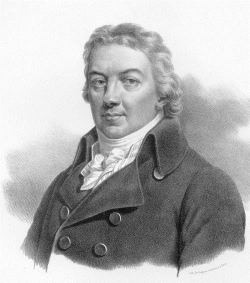Edward Jenner

- Born
- 17 June 1749
- Died
- 26 January 1823 (age 73)
Edward Jenner was a West Country lad through and through. Born in 1749 in Berkeley, Gloucestershire, he was schooled in Wotton-under-Edge and Cirencester, before learning his medical trade as an apprentice in Chipping Sodbury. He left for London (to complete his qualifications) in his early twenties, but returned to work in his native Gloucestershire two years later.
At the time, one of the most dangerous diseases was smallpox. The only way of preventing it was through a process called variolation. This involved taking samples (sometimes of scabs or pus) from patients and rubbing the sample into cuts made in the skin. The patient developed a diluted form of the disease and would then be immune to smallpox.
Variolation (derived from the Latin name for smallpox, ‘Variola’) was actually quite a risky procedure. There was a folk tale that cowpox sufferers never caught smallpox, which led Jenner to conduct an experiment. Cowpox is basically the cow version of smallpox, but a lot milder, and it can be transferred to humans. In 1796, Jenner tested the hypothesis on a local boy, using a sample from a cowpox-infected milkmaid. Once the boy’s cowpox symptoms had passed, Jenner used variolation to test the boy’s immunity to smallpox. Thankfully he had been successful.
The aim of vaccines is to create an immune response. That way, when a patient is exposed to the ‘real’ disease the ‘immune response can kick in a lot quicker, stopping the infection in its tracks. In the first phase, macrophages digest all but the antigens, which are then recognised by lymphocytes. Macrophages and lymphocytes are broad categories of white blood cells. The latter mop up any remaining infectious cells and lay the groundwork for future disease prevention.
Jenner did not just work on immunology. He did other medical research, such as post-mortem examinations on angina victims; Jenner made the link between fatty deposits lining their arteries and the disease that killed them. For variety, Jenner also studied how cuckoos parasitise other birds’ nests; hibernation and bird migration. He was a lifelong collector of fossils.
Edward Jenner remained in Gloucestershire for much of his life, dying of a stroke in 1823. He left behind a legacy that is now easy to take for granted.
This profile was written by a Biology: Changing the World volunteer.



